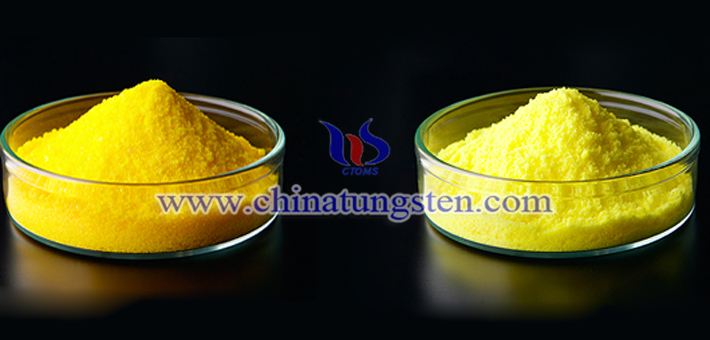99.5% tungstic acid may be prepared by "dissociation-slurrying-acid decomposition" process. This process uses less raw materials and auxiliary materials. And it is easy to operate. So, it is cost-saving and time-saving.
Some people have conducted experiments on acid decomposition of tungstic acid, acid decomposition of ammonium paratungstate (APT), and acid decomposition of CaWO4 to make tungstic acid. The first two methods have been found to be slow to decompose. As the decomposition reaction proceeds, the acidity decreases continuously, so that tungstic acid is very easy to gel and “encapsulate” undecomposed tungstate crystal grains, making it difficult to filter and wash. The decomposition rate of the latter method is faster than the first two, but it is difficult to obtain the required purity due to the introduction of calcium (Ca). Also, the solubility of calcium tungstate is small, so that the two-phase reaction is difficult to complete at atmospheric pressure as the material increases. In particular, the particle size of tungstic acid is difficult to meet the requirements for producing tungsten-rhenium thermocouple filaments.
In general, the liquid-liquid reaction is generally faster and more uniform than the solid-liquid reaction. If the APT in the aforementioned two methods can be first dissolved in the solvent, then undergo acid decomposition, the reaction state will be greatly improved. It was found that when the APT was decomposed into ammonium metatungstate (AMT) and dissolved in water to make slurry, the decomposition rate of acid and precipitation were improved. And therefore, "dissociation-slurrying-acid decomposition" was adopted for preparing high-purity tungstic acid.
More details, please visit:
http://www.tungsten-powder.com/tungstic-acid-property.html




